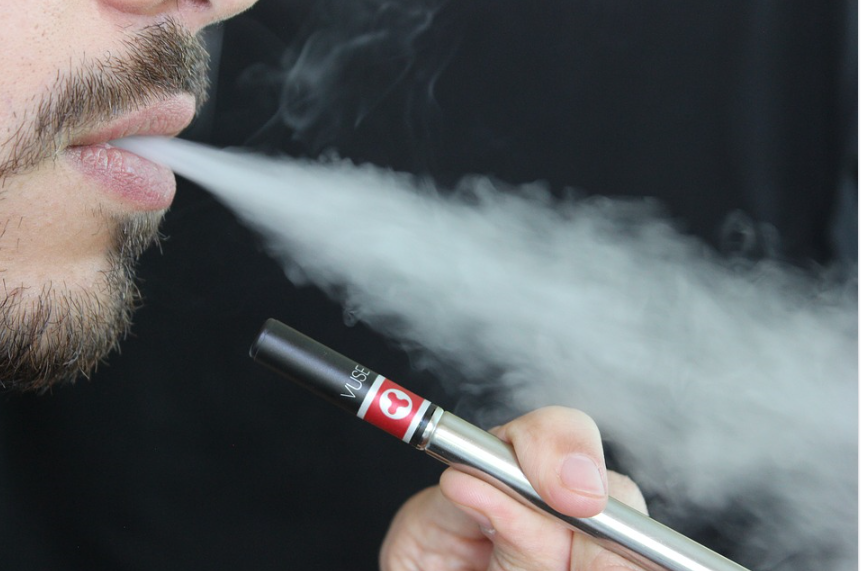Vaping: A new epidemic among our youth
A few years ago I found what looked like a flash drive plugged into the wall in my teenage son’s room. I took it and threw it in my purse, naively wondering why a flash drive would be plugged into the wall.
Later that day, I was with a girlfriend having coffee. I reached into my purse to grab a pen and pulled out the flash drive that I had found earlier that day. “Hey, do you know what this is?” I asked. “That’s a Juul” she said, “All of the kids are using them.”
A 2016 survey found that more than two million middle school and high school students had reported using e-cigarettes in the past 30 days. Most students claim they are only inhaling flavored liquid, but many of these products contain potent amounts of nicotine.
A study published this week found that 1 in 11 U.S. students use e-cigarettes to inhale marijuana. Two weeks ago, the Food and Drug Administration (FDA) declared the teenage use of e-cigarettes a national epidemic and gave the five largest makers of e-cigarettes 60 days to produce plans to keep their product away from minors.

The agency also sent warning letters to 1,100 retailers, issued fines for selling e-cigarettes to minors, and launched a comprehensive education campaign about the dangers of e-cigarettes. This, according to an article published the New England Journal of Medicine this week, was done after prompting from six public health agencies and a coalition of 11 U.S. senators.
The FDA should be applauded for its recent efforts to address this epidemic of underage vaping. But how did we get here, especially after our decades-long, relatively successful efforts to reduce use among our youth?
The FDA suggests at least two contributing factors. First, offering flavored e-cigarettes makes them especially attractive to kids. I have heard this directly from my kids and their friends – regular cigarettes are “disgusting,” but e-cigarettes taste good, available in a wide variety of kid-friendly favors (e.g., gummy bear, cotton candy and chocolate).
They also do not leave a strong scent, making them more socially acceptable and easier to use covertly. In fact, many teens are using e-cigarettes (especially the small USB-looking “pod mods” made by Juul that I found in my son’s room), undetected, in the classroom.
Second, there is a widespread misconception that e-cigarettes are not bad for you. Eighty percent of youth do not think the regular use of e-cigarettes is harmful, despite the fact that they can contain dangerous chemicals, even if they don’t contain nicotine or marijuana.
This is particularly troublesome, the FDA points out, because harm perceptions have been shown to influence tobacco use behaviors (i.e. higher perceived harm was associated with lower levels of openness and curiosity).
It will be interesting to see what plans the makers of e-cigarettes propose for keeping their product away from minors. One thing they can do is make the product less attractive to kids by making them unflavored and changing the colorful, cartoon-like packaging that resembles candy. They can also add more prominent warning labels and avoid advertising on websites and social media outlets frequented by children.
However, it will take more than industry action to combat what has become the ubiquitous use of e-cigarettes among minors. No store should sell these products to children under the age of 18, as it is prohibited by law. Yet, minors are gaining access at alarming rates.
Internet sales of e-cigarettes will need greater regulation, and delivery apps, like Favor, Door Dash, and others will need to be regulated so that adult drivers are not unwittingly delivering these products to underage consumers.
Finally, states might consider passing laws that raise the legal age of purchase to 21. A recent survey conducted by the Texas Medical Center across five states found that there is broad bipartisan support for this.
It will take a combination of actions, including more stringent regulations, industry cooperation and compliance, and widespread public education about the risks of regular e-cigarette use to correct the current trend of teenage vaping. This will require a significant investment of resources, but I am at least encouraged that there finally seems to be the political will and broad social support to steer us in the right direction.
–By Amy McGuire, J.D., Ph.D., director and professor of biomedical ethics in the Center for Medical Ethics and Health Policy at Baylor College of Medicine




much better then the alternative of smoking actual cigarettes, many ecigs do not even contain nicotine, so is no different then walking through a fog machine at a amusement park